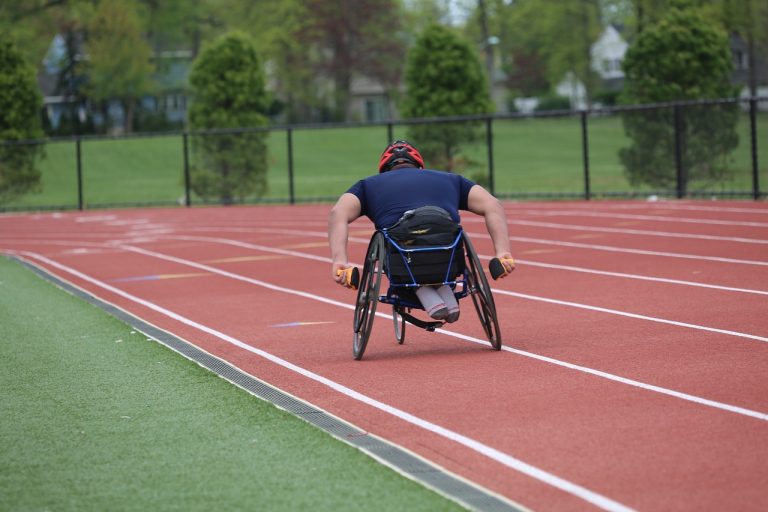General Rules of High Power Rifle Shooting
When handling high power rifles, prioritize safety above all else. Treat every rifle as loaded, keeping your finger off the trigger until you're ready to shoot. Select a rifle with excellent accuracy and high bullet velocity. Properly maintain your equipment for peak performance. Utilize proper shooting techniques like breathing control and smooth trigger pulls. Pay attention to range commands and respect the authority of Range Officers. Always adhere to match guidelines and respect your competitors. Remember, understanding these rules is just the beginning of your journey to becoming a skilled high power rifle shooter.
Safety Measures
When handling high power rifles, always prioritize safety above all else. Safety precautions are paramount in ensuring a secure environment for yourself and those around you. Before even picking up a rifle, familiarize yourself with the emergency procedures at the shooting range. Understanding how to respond in case of an emergency can prevent accidents and save lives.
When it comes to safety precautions, always treat a rifle as if it is loaded, even if you believe it to be empty. Keep your finger off the trigger until you are ready to shoot, and never point the rifle at anything you do not intend to shoot. Additionally, make sure to wear appropriate safety gear such as ear and eye protection to safeguard yourself from potential harm.
In the event of an emergency, remain calm and follow the established procedures. Whether it's a misfire or an unexpected situation, knowing how to react swiftly and efficiently can make all the difference. By prioritizing safety precautions and familiarizing yourself with emergency procedures, you contribute to a safer and more secure high power rifle shooting experience.
Equipment Requirements
When it comes to high power rifle shooting, it's important to pay close attention to the equipment requirements. The specifications of your rifle, the optics and accessories you choose, and your proper shooting stance all play a significant role in your performance. Understanding and adhering to these points will not only enhance your shooting experience but also improve your accuracy and consistency on the range.
Rifle Specifications
Ensuring your rifle meets the specific equipment requirements is essential for high power rifle shooting competitions. To optimize your performance, pay attention to the following rifle specifications:
- Rifle Accuracy: Choose a rifle with excellent precision to consistently hit targets at varying distances.
- Bullet Velocity: Select a rifle that can achieve high bullet speeds for better long-range performance.
- Caliber: Pick a caliber that meets the competition regulations and suits your shooting style.
- Action Type: Consider whether a bolt-action, semi-automatic, or other action type best suits your shooting needs.
Optics and Accessories
Have you considered the importance of selecting the right optics and accessories to enhance your high power rifle shooting performance? Scope selection is vital; make sure your scope matches the caliber and purpose of your rifle. Proper mounting is essential to maintain zero and accuracy. Accessories like bipods, slings, and shooting bags can improve stability and shot consistency. Regular maintenance of your optics is key; keep lenses clean and check for any loose screws or damage. Properly caring for accessories such as slings and bipods ensures they function correctly when needed. By investing time in selecting the right optics and maintaining your accessories, you set yourself up for success in high power rifle shooting.
Proper Shooting Stance
To optimize your high power rifle shooting performance through proper shooting stance, it is imperative to understand the specific equipment requirements that contribute to stability and accuracy. When setting up for your shot, consider the following key elements:
- Breath Control: Utilize proper breathing techniques to minimize movement and maintain a steady aim.
- Trigger Squeeze: Practice a smooth and consistent trigger pull to avoid jerking the rifle off target.
- Sight Alignment: Make sure your sights are properly aligned with the target for precise shot placement.
- Follow Through: Maintain your shooting position and focus even after the shot is fired to evaluate your performance effectively.
These equipment requirements play an important role in establishing a solid shooting foundation and enhancing your overall shooting experience.
Course of Fire
In the High Power Rifle Shooting Rules, the Course of Fire outlines the specific sequence and requirements for shooters during a competition. Target positioning is essential in the Course of Fire, as shooters must adapt to various distances and heights, testing their skills and adaptability. Understanding scoring techniques is key, as precision and accuracy play a significant role in determining a shooter's success.
When it comes to windage adjustments, shooters must account for the wind's direction and speed, making real-time calculations to guarantee their shots hit the mark. Elevation calculations are equally crucial, especially in long-range shooting where even the slightest miscalculation can result in a missed target.
The Course of Fire challenges shooters to demonstrate their proficiency in different scenarios, pushing them to hone their skills and make split-second decisions. By mastering target positioning, scoring techniques, windage adjustments, and elevation calculations, shooters can navigate the Course of Fire with confidence and precision, enhancing their overall performance.
Scoring System
When it comes to the scoring system in high power rifle shooting, understanding the target scoring methods is essential for accurately evaluating your performance. Impact assessment techniques play a key role in determining the points you receive for each shot, influencing your overall score in the competition. Familiarizing yourself with these methods can greatly enhance your ability to strategize and improve your shooting proficiency.
Target Scoring Methods
Understanding the target scoring methods in high power rifle shooting is essential for competitors to accurately assess their performance. When it comes to target scoring, there are several key aspects to take into account:
- Target Placement: The precise placement of shots on the target is vital for scoring accuracy. Understanding where to aim on the target can make a significant difference in the final score.
- Scoring Techniques: Different scoring techniques are used to determine the value of each shot on the target. Familiarizing yourself with these methods can help you maximize your score.
- Scoring Accuracy: Achieving high scoring accuracy involves consistency in shot placement and technique. Practice and focus are essential for improving accuracy.
- Target Distance: The distance from which you shoot at the target can impact scoring. Adjusting your technique based on target distance is key to success in high power rifle shooting.
Impact Assessment Techniques
Utilizing specific impact assessment techniques is essential in the high power rifle shooting scoring system to evaluate shot placement accurately. Impact assessment involves a meticulous analysis of shot placement on the target to determine the score earned by each shot. Data analysis plays a critical role in this process, aiding shooters in understanding patterns and making adjustments to their shooting technique. By carefully evaluating the impact of each shot, shooters can identify areas for improvement and refine their skills over time. Additionally, considering factors like wind adjustment is important for accurate impact assessment, as wind conditions can greatly influence shot placement. Developing a keen eye for impact assessment techniques can enhance a shooter's overall performance and elevate their proficiency in high power rifle shooting.
Time Limits
Time limits in high power rifle shooting competitions play an essential role in maintaining fairness and efficiency throughout the event. Adhering to these time constraints guarantees that all participants have an equal opportunity to demonstrate their skills and compete on a level playing field. Here are some key aspects to ponder regarding time limits in high power rifle shooting:
- Precision Timing: Being mindful of the time allotted for each stage of the competition is vital. Practice shooting within these time limits to enhance your speed and accuracy under pressure.
- Strategic Time Management: Develop shooting strategies that take into account the time constraints of each round. Efficiently planning your shots can help you maximize your score within the given time frame.
- Maintaining Focus: Use mental preparation and focus exercises to stay concentrated during the limited time available for shooting. Clear your mind of distractions and concentrate solely on the task at hand.
- Adaptability: Be prepared to adjust your shooting pace based on the time remaining. Flexibility and quick decision-making can be advantageous in meeting time limits without compromising accuracy.
Understanding and effectively managing time limits in high power rifle shooting can greatly enhance your performance and overall experience during competitions.
Shooting Positions
When assuming shooting positions in high power rifle competitions, maintaining stability and proper form is essential for consistent accuracy and precision. Firing positions and techniques play a vital role in achieving ideal results on the range. To enhance your shooting skills, focus on body alignment and stability.
The prone position is favored for its stability, with the body lying flat on the ground, rifle supported by both hands and the shoulder. This position offers a solid foundation for precise aiming and control. Moving to the sitting position requires the shooter to sit upright with the legs crossed, providing a stable base for accurate shooting.
Shifting to the kneeling position demands balance and core strength, with one knee and both feet supporting the body weight. This position can be challenging but allows for flexibility in aiming. Lastly, the standing position tests the shooter's endurance and focus, requiring steady hands and controlled breathing to maintain accuracy.
Range Commands
To guarantee smooth coordination and safety during high power rifle competitions, grasping and adhering to range commands is essential. Range commands are necessary for maintaining order and ensuring a safe environment for all participants. Here are some key points to ponder regarding range commands:
- Range Etiquette: Respect the authority of the Range Officer and follow their instructions promptly. Clear communication is pivotal to prevent misunderstandings and accidents.
- Communication: Pay close attention to all range commands. Effective communication among shooters and Range Officers is required to maintain a controlled and safe shooting environment.
- Shot Placement: Range commands may include instructions on where to aim or adjust your shot placement. Consistency in following these commands can enhance your accuracy and overall performance.
- Consistency: Whether it's reloading, firing, or ceasing fire, consistency in following range commands is crucial. This ensures that everyone on the range is on the same page and reduces the risk of incidents.
Protest Procedures
When considering protest procedures in high power rifle shooting, it is essential to understand the Protest Submission Process, Protest Review Timeline, and Protest Decision Appeals. These three key points play a significant role in ensuring fairness and transparency in handling any disputes that may arise during competitions. Familiarizing yourself with these processes will empower you to navigate any potential challenges effectively.
Protest Submission Process
The protest submission process in high power rifle shooting involves a structured and formal procedure for addressing disputes or concerns during competitions. When submitting a protest, it is crucial to follow specific submission guidelines to guarantee a fair and efficient process. Here are some key steps to ponder:
- Clearly State the Concern: Articulate your protest with precision, outlining the exact nature of the issue for a swift resolution.
- Provide Evidence: Support your protest with relevant data or evidence to strengthen your case and aid in a thorough investigation.
- Respect Deadline: Adhere to the designated timeline for protest submission to prevent delays in the resolution process.
- Stay Updated: Stay informed about the progress of your protest and be prepared to provide further information if required.
Protest Review Timeline
In high power rifle shooting, understanding the Protest Review Timeline is key to maneuvering the Protest Procedures effectively. The review process plays a significant role in determining protest outcomes. A transparent timeline guarantees that all parties involved are aware of the stages leading to protest resolution. This transparency fosters trust in the system and allows for a fair assessment of the situation. By adhering to the established timeline, the protest process can proceed smoothly, minimizing delays and ensuring that decisions are made promptly. Participants benefit from a clear understanding of when each step in the review process is expected to occur, ultimately leading to timely and satisfactory protest resolutions.
Protest Decision Appeals
For effective navigation of the protest procedures in high power rifle shooting, understanding the process of Protest Decision Appeals is essential. When engaging in the appeal process for dispute resolution, keep the following steps in mind:
- Review Decision: Carefully review the initial decision that led to the protest.
- Prepare Appeal: Gather all relevant evidence and documentation to support your appeal.
- Submit Appeal: Follow the specified guidelines for submitting your appeal within the designated timeframe.
- Await Response: Be patient while waiting for the decision on your appeal, as the process may take some time.
Match Conduct
Throughout high power rifle shooting competitions, adherence to strict match conduct guidelines guarantees fairness, safety, and integrity in the sport. Match etiquette and competitor behavior play vital roles in maintaining a level playing field. Competitors must demonstrate respect for one another, officials, and the rules of the competition. Following range etiquette is equally important, ensuring the safety of all individuals present. It is imperative to handle firearms responsibly, always pointing them in a safe direction and keeping fingers off the trigger until ready to shoot. Spectators also have a role to play in maintaining match conduct by observing quietly and without disturbing competitors. Their conduct should not interfere with the shooters' concentration or the flow of the competition. By upholding these standards of behavior, participants contribute to a positive and professional atmosphere, elevating the overall experience for everyone involved in high power rifle shooting competitions.
Disqualification Criteria
Adherence to specific disqualification criteria is vital for maintaining the integrity and fairness of high power rifle shooting competitions. To guarantee a level playing field and uphold the standards of sportsmanship, it is essential to grasp the disqualification process and eligibility requirements. Here are some key points to ponder:
- Safety Violations: Any breach of safety rules, such as improper handling of firearms or failure to follow range safety protocols, can lead to immediate disqualification.
- Equipment Non-Compliance: Rifles must meet specific regulations regarding caliber, modifications, and optics. Any deviation from these guidelines can result in disqualification.
- Behavioral Misconduct: Unsportsmanlike conduct, including verbal abuse, cheating, or disruptive behavior, is grounds for disqualification.
- Failure to Meet Eligibility Requirements: Competitors must adhere to age, experience, and membership criteria outlined by the governing body to remain eligible for participation in high power rifle shooting events.
Understanding and abiding by these disqualification criteria is pivotal for all participants to ensure the fairness and integrity of high power rifle shooting competitions.
Awards and Recognition
To fully appreciate the culmination of high power rifle shooting competitions, it is imperative to understand the significance and impact of awards and recognition within the competitive domain. Recognition ceremonies mark the pinnacle of achievement in these events, where shooters gather to celebrate excellence and sportsmanship. The trophy presentation is a moment of pride and honor, symbolizing the dedication and skill required to succeed in this challenging discipline.
Moreover, the awards banquet serves as a platform for camaraderie and reflection on the trials and triumphs of the competition. Here, shooters receive achievement certificates, acknowledging their hard work and commitment to the sport. These certificates not only validate individual performance but also motivate others to excel in their own marksmanship journey.
In the world of high power rifle shooting, awards and recognition are not merely tokens of appreciation but symbols of perseverance and excellence. They encapsulate the spirit of competition and camaraderie, fostering a community bound by shared passion and respect for the sport.
Frequently Asked Questions
Can High Power Rifle Shooters Use Electronic Sighting Devices in Competitions?
Yes, high power rifle shooters can use electronic sighting devices in competitions. While these devices offer a competitive advantage, they must adhere to strict equipment regulations. The use of such technology is carefully monitored to maintain fairness.
Are There Any Restrictions on the Type of Ammunition That Can Be Used in High Power Rifle Shooting Competitions?
In high power rifle shooting competitions, there are specific restrictions on the types of ammunition you can use. Caliber restrictions are in place to guarantee fairness and safety, so be mindful of these guidelines when selecting your rounds.
How Are Ties Typically Broken in High Power Rifle Shooting Competitions?
When ties occur in high power rifle shooting competitions, they are typically broken by examining the shooters' scores in specific stages or targets. Tie breaker procedures are essential in determining the final rankings, ensuring fair outcomes.
Are There Any Specific Rules Regarding the Use of Accessories or Modifications to Rifles in Competitions?
When it comes to rifle modifications and shooting accessories in competitions, specific rules dictate their use. Factors like target distance and wind conditions can impact the choice of accessories, making adherence to regulations important for fair play.
What Is the Process for Filing a Complaint or Dispute About a Ruling or Decision Made During a Competition?
If you're unhappy with a ruling during a competition, here's what you do: To begin with, familiarize yourself with the filing process. Then, follow the appropriate steps to have your dispute resolved, ensuring fair and just outcomes.






